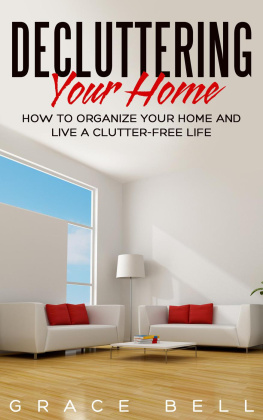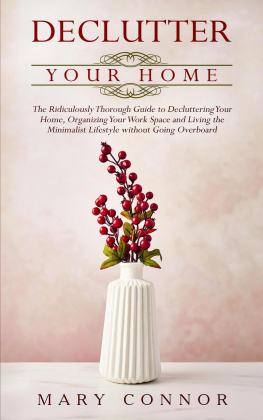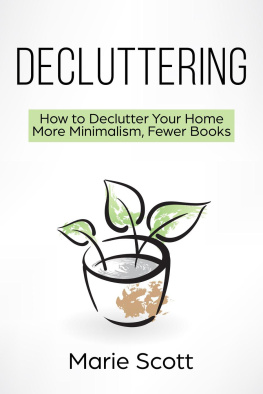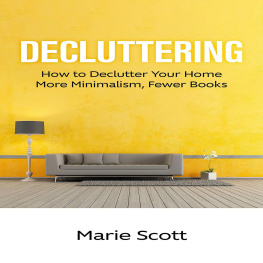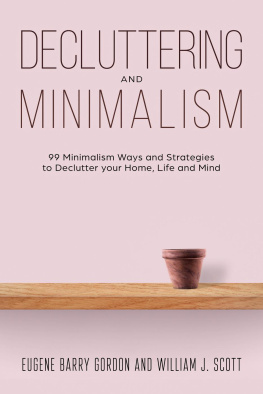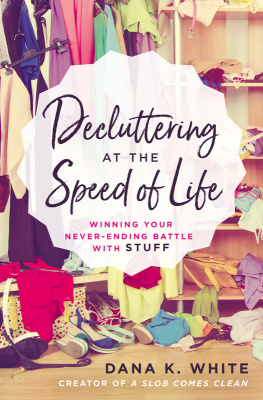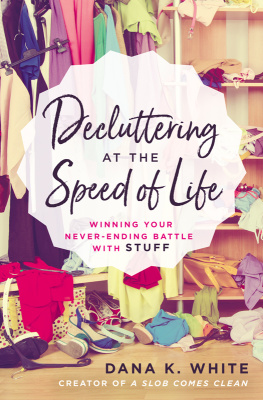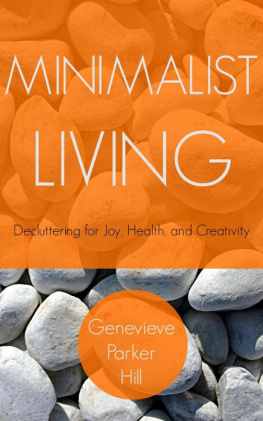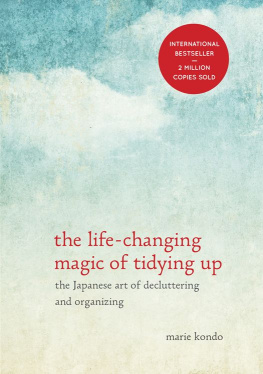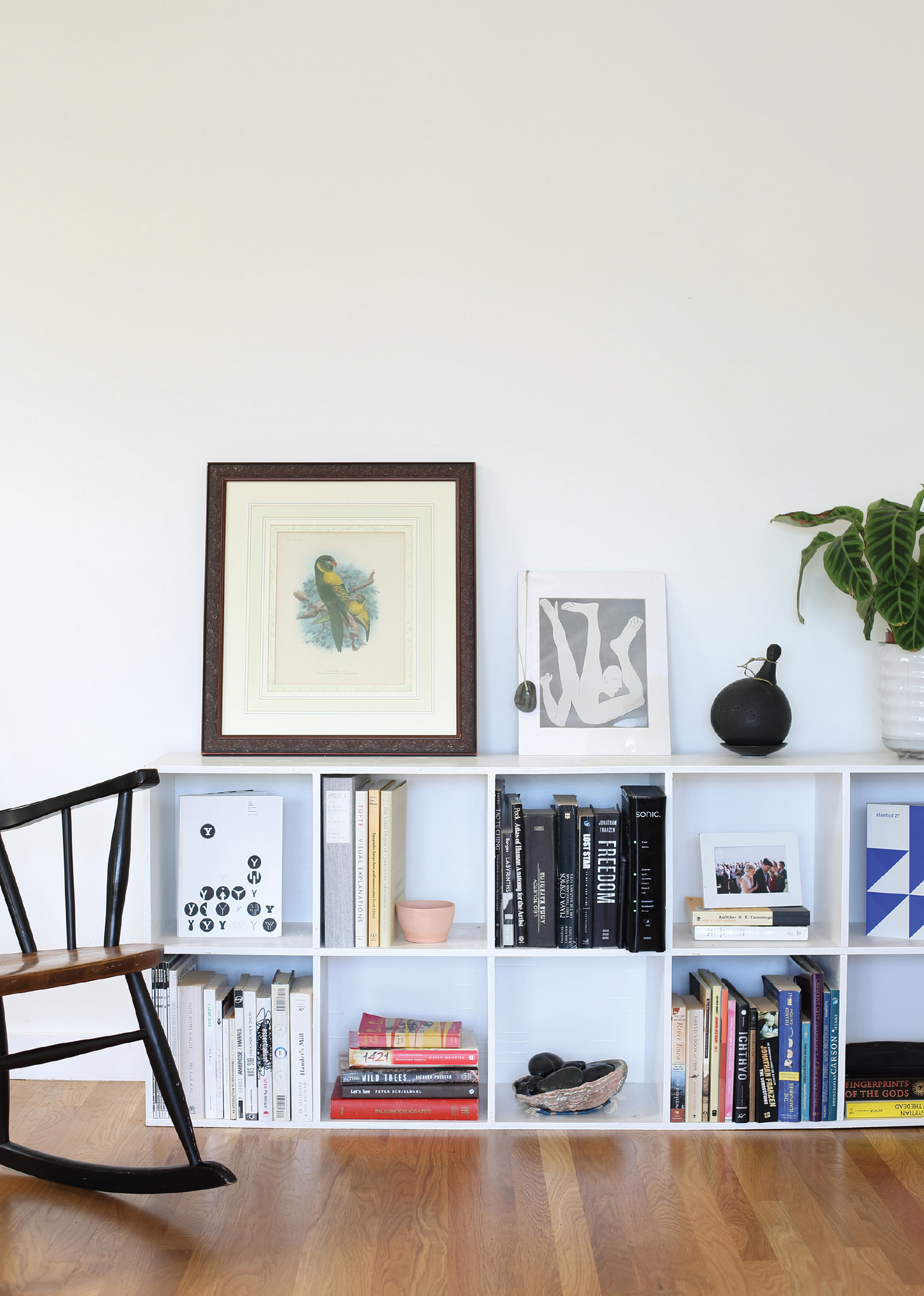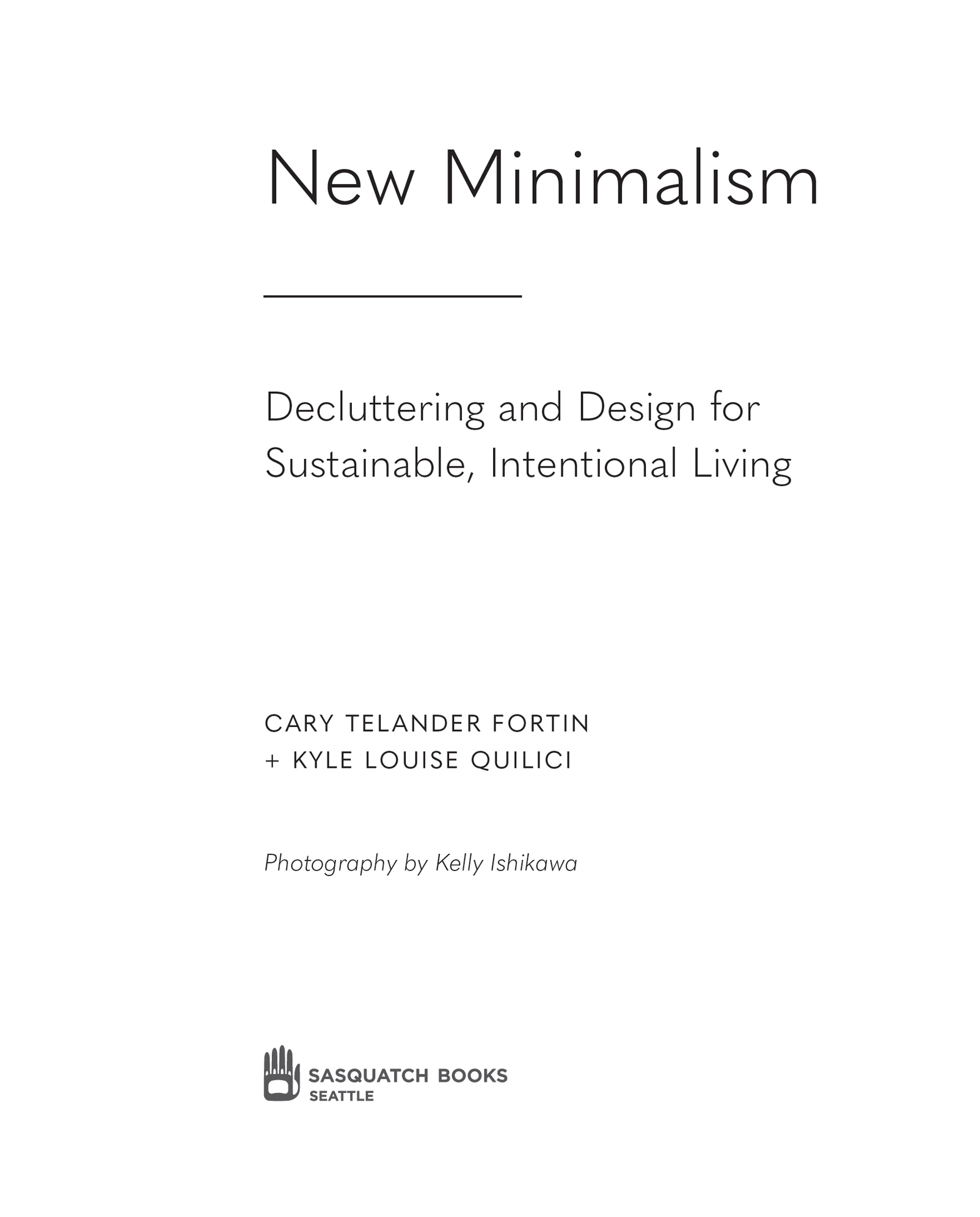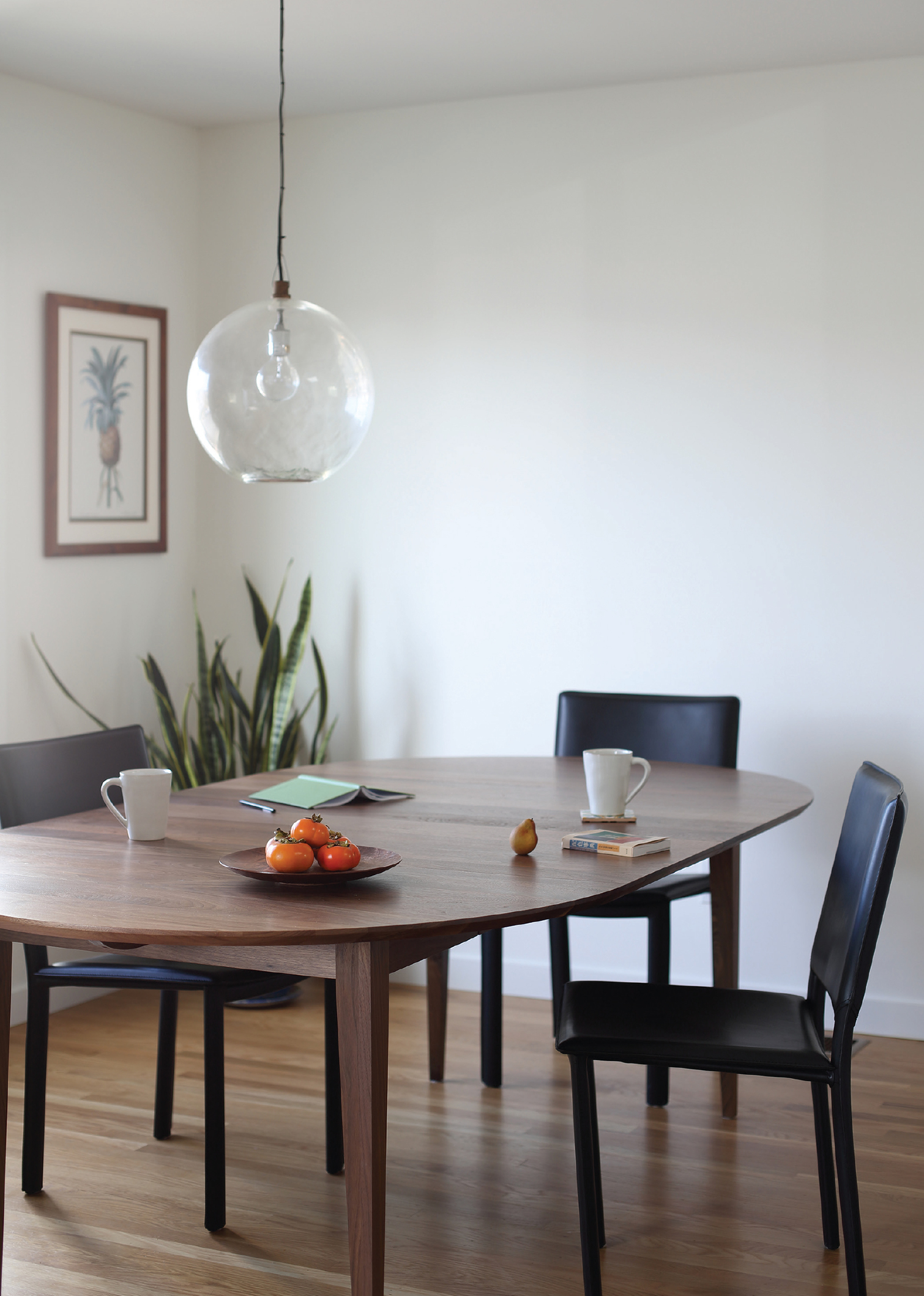Contents
Copyright 2018 by Cary Telander Fortin and Kyle Louise Quilici
All rights reserved. No portion of this book may be reproduced or utilized in any form, or by any electronic, mechanical, or other means, without the prior written permission of the publisher.
Published by Sasquatch Books
Editor: Hannah Elnan | Production editor: Bridget Sweet
Design: Anna Goldstein | Copyeditor: Janice Lee
Photographer: Kelly lshikawa
Contributing photographers: Sarah Deragon ()
Library of Congress Cataloging-in-Publication Data
Names: Fortin, Cary Telander, author. | Quilici, Kyle Louise, author.
Title: New minimalism : decluttering and design for sustainable, intentional living / Cary Telander Fortin and Kyle Louise Quilici.
Description: Seattle : Sasquatch Books, [2018]
Identifiers: LCCN 2017028684 | ISBN 9781632171320 (hardcover)
Subjects: LCSH: Storage in the home. | House cleaning. | Orderliness.
Classification: LCC TX324 .F667 2018 | DDC 648/.8dc23
LC record available at https://lccn.loc.gov/2017028684
ISBN:9781632171320
Ebook ISBN9781632171337
Sasquatch Books
1904 Third Avenue, Suite 710 | Seattle, WA 98101
(206) 467-4300 |
www.sasquatchbooks.com
The names and other identifying characteristics used throughout this book have been changed to ensure the privacy of our beloved clients.
v5.1
a
For Cam and Brady
CONTENTS
INTRODUCTION
WHAT IS NEW MINIMALISM?
New Minimalism is a call to a mindful, intentional way of living, prioritizing relationships and experiences above material things. Its a way of life celebrating the idea that you cant buy your happiness. This philosophy maintains that your time is better spent experiencing life with people than it is spent looking for, managing, organizing, cleaning, and purchasing (and subsequently returning) things.
Traditional minimalism worships at the altar of less is better. It is an austere philosophy of stripping down to the bare essentials and questioning what is required for ones basic survival. It conjures imagery of ascetic, Thoreau-like solitude: owning a single fork and knife while foraging berries from the surrounding woods. While living under these extreme conditions certainly provides valuable lessons, over time it can be constricting and limiting.
At the opposite end of the spectrum is the consumer-based lifestyle that has unfortunately become synonymous with the American Dream. This hyperconsumption was exciting at first (read: all cultural evidence from the 80s). But then we came to collectively understand there was a weight and heaviness associated with all this stuff. And living this way was not only constricting us on an individual basis but was also harming our beautiful planet.
New Minimalism exists as a middle path between traditional minimalism and over-the-top consumerism. We honor the vital role material things have in our lives. We appreciate beauty, textures, and color in our homes. We know the joy of a favorite mug; we understand the comfortable embrace of a loved sweater. We savor art that lacks a practical purpose yet speaks volumes to our souls. And we believe that the beauty of these favorite items is elevated against a quiet backdrop. Our approach is not prescriptive or formulaic; you wont have to catalog everything you own or whittle your possessions down to a specific number of items. This book is about finding your own wonderful, decidedly unique middle path.
On this middle path we seek out what the Swedish call lagom. This word is often translated as enough; however, it is far more nuanced and lovely than that. A closer definition is just the right amount. Perhaps the most important thing to recognize about lagom is that by definition it is subjective. There is beauty in all its flexibility, in knowing that lagom doesnt inherently mean two bath towels per person any more than it means eight. It means the amount that is right for you at this time, in this life.
Wait, you may ask, so does that mean I can keep all forty of my pairs of boots? Well, no, not exactly. The challenge is to reach this place of lagom while concurrently cultivating a spaciousness in your home and in your days. Defining what lagom means to you requires a return to your true, basic self. You have to remove years of programming and hundreds of thousands of advertisements; you have to look past what the people around you are doing and perhaps even reject the way in which you were raised. You have to get very quiet and deeply honest with yourself. Only then will you know what lagom means for you. Consider this book your guide.
THE BENEFITS
Before we dig into the hows behind decluttering and redesigning your home the New Minimalist way, its important to know the whys. Below are just a few of the benefits you can expect from your newly simplified life.
Actual free time. When you have less to buy, to clean, to maintain, you finally get to relax and have that down time. You get to be that person you see in magazines who is simply reading on the couch or making a lively meal with his kids.
Money saved. You have fewer things to buy and fewer things to fix when they break. You save money, which allows you to invest in things made of higher quality and durability. Its a cycle of prosperity.
Fewer to-dos. This basically results in more sanity, which we could all use, right?
Room for spontaneity. When you intentionally agree to only the most important and fulfilling time commitments and say no to the rest, you leave space in your schedule to say yes to a spontaneous date or to pop into that lecture at the community center.
A NOBLE ACT OF ENVIRONMENTALISM
There are a number of other significant yet less obvious benefits to cultivating a simpler life, like, ahem, saving the planet! Minimalism is inherently a form of environmental activism. Whether or not being a warrior for our planets health was at the top of your to-do list when you picked up this book, when you adopt the habits we discuss here, your actions will be a benevolent service to our earth.
As a follower of New Minimalism, you choose to buy less overall with a focus on purchasing quality, long-lasting goods. When you spend less time shopping at malls and online, when you redefine your consumption habits to support your pure needs and selected wants, you are, in a small but significant way, decreasing demand for the manufacture of new items. As a result, you are treading far more gently on this earth while graciously sharing its resources with your greater community.
Committing to owning fewer, better things means that you have more time to purchase intentionally; you can take the time to source a Forest Stewardship Councilcertified dining table or wait for the perfect lamp to arrive at the consignment shop. Since youre purchasing less, you can use the money you save to support fair-trade and locally made goods. In turn, youll have quality items that last longer, and youll be promoting an ethos of production that benefits yourself; the workers, farmers, and craftspeople who made each item; and the environment.


